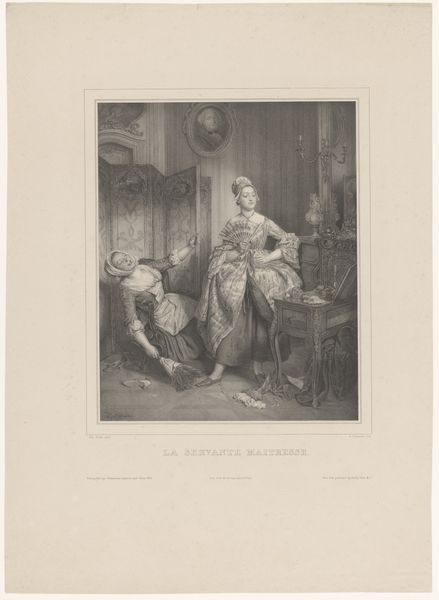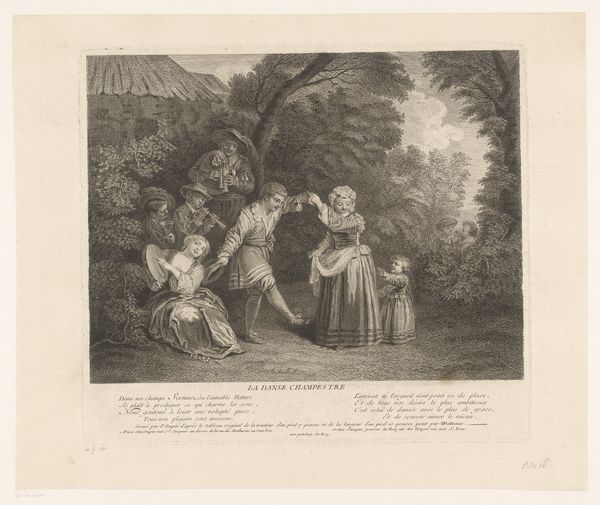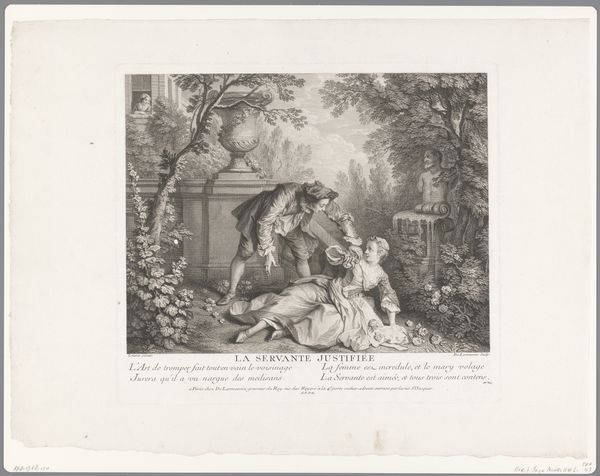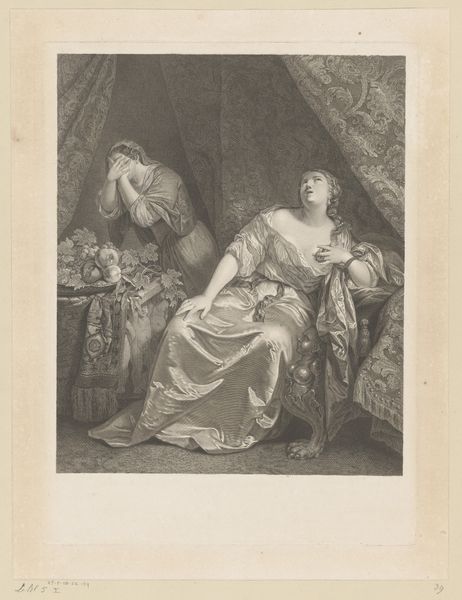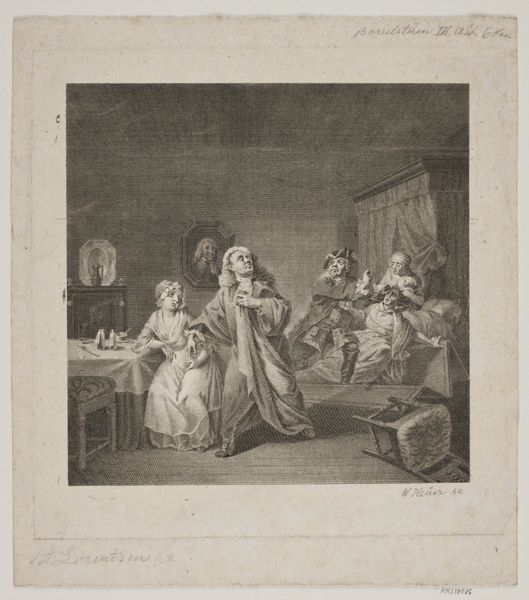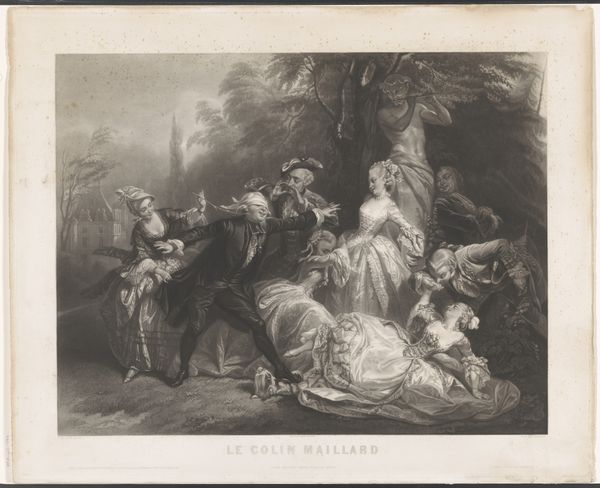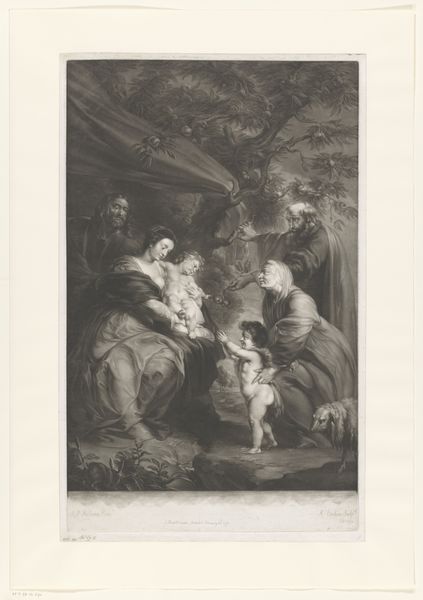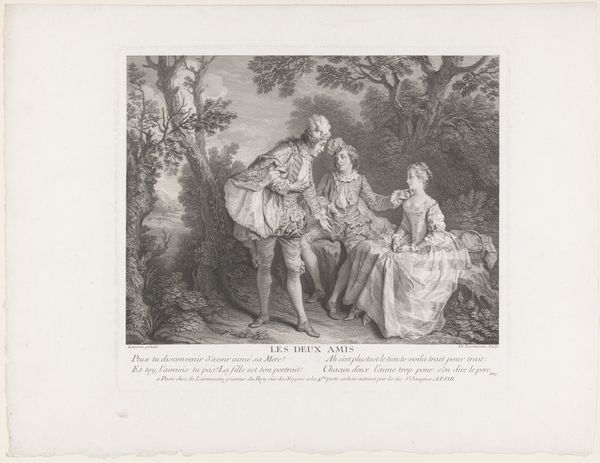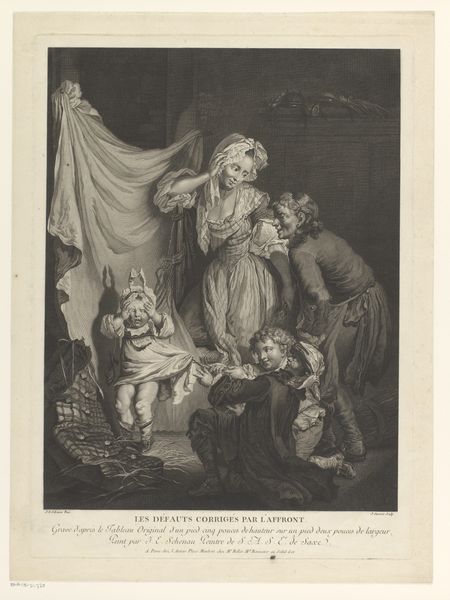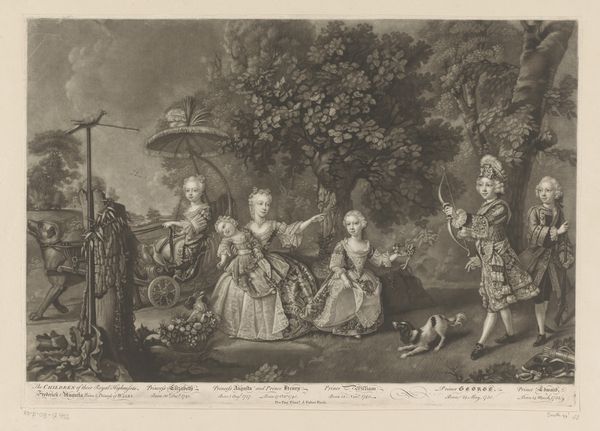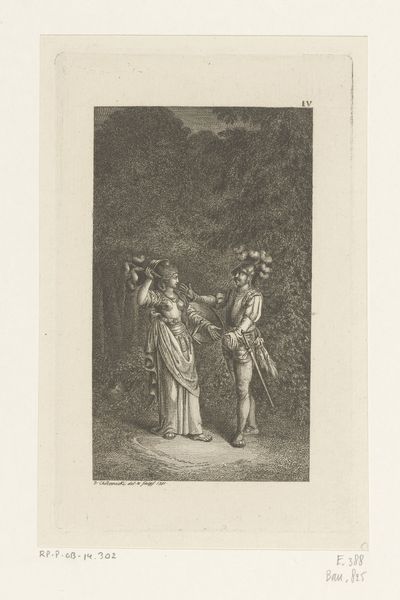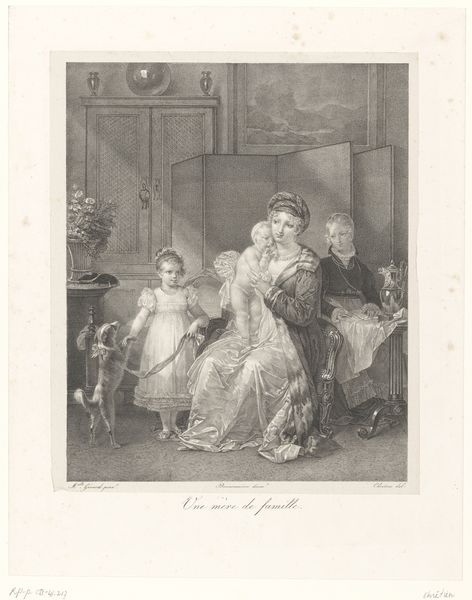
engraving
#
portrait
#
neoclacissism
#
narrative-art
#
genre-painting
#
history-painting
#
academic-art
#
engraving
Dimensions: height 554 mm, width 455 mm
Copyright: Rijks Museum: Open Domain
Editor: This engraving, "Hero en Ursula worden afgeluisterd door Beatrice" from 1791, is based on a design by John Jones. It depicts three women in a garden setting. I’m curious about the stark contrast and what looks like meticulous detail in their clothing. What aspects of its materiality or the process of its creation strike you? Curator: It’s interesting to note the technique of engraving prevalent at this time, think about the social implications of making this piece. What was the labor like for the engravers? Engraving allowed for relatively affordable reproduction of images, how did this impact access to art and literacy amongst the middle classes in the late 18th century? Editor: That's fascinating! It makes me think about how this method, compared to something like painting, allowed for broader dissemination and changed who got to experience visual art. Curator: Exactly. The materials and processes shaped not only the visual style but also the cultural reach. Consider the cost of paper, ink, and the time investment of the engraver - where does the value really reside? And who gets to define that value? Are the fine lines themselves a marker of status, indicating luxury achievable only through laborious production, or is it an illusion masking an industrious commodification of art? Editor: So, it's not just about the artistic skill but about how the choice of materials and the means of production influence access, value, and even meaning within society. I never considered that so deeply. Curator: Indeed. The engraving is both an object of aesthetic contemplation and a product embedded in social and economic relationships. Now, when you consider that, what else do you see in the expressions of these characters in the garden?
Comments
No comments
Be the first to comment and join the conversation on the ultimate creative platform.
